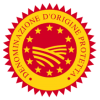Rosé Wine, whose production began in Puglia in 1892, is obtained using black grapes where, during processing, the must remains in contact with the skins for a minimum of 2 hours up to a maximum of 36, in this way the skins give only part of the color to the must. Alternatively, the bleeding method can be used, which consists in removing part of the must during red vinification, therefore in the presence of the skins, so as to obtain a rosé wine. It has a color aspect between pale pink, cherry and claret, it is generally characterized by fruity aromas, the taste is dominated by sensations of slight acidity, aromaticity and light body
Brand: Bigagnoli
Bardolino Chiaretto Bigagnoli, organic product, is a young, fragrant and light wine that originates on the Veronese shore of Lake Garda. It is produced from indigenous red grape varieties typical of the area. This wine originates in the locality of Calmasino, in the municipal territory of Bardolino...
13.00 €
Ex Tax: 10.66 €
Brand: Duca della Corgna
Martavello Duca della Corgna, is produced from 100% Trasimeno Gamay grapes grown in the vineyards of associated producers on the hills of Castiglione del Lago, Paciano and Panicale. The soil for this blend is sedimentary, with a sandy-clayey or sandy texture. It has an average altitude of 300/30 met..
6.80 €
Ex Tax: 5.57 €
Brand: Perticaia
Rosato Perticaia, is a fresh and fruity version of 100% Sagrantino grapes. It is an intense rosé that perfectly respects the characteristics of the vine, with extreme aromatic fidelity. Consistent with the enhancement of terroir while respecting the environment and exalting the Umbra winemaking trad..
13.50 €
Ex Tax: 11.07 €
Brand: Terre de La Custodia
Rosato Terre de la Custodia is produced from Pinot Noir, Merlot and Sangiovese grapes grown at an altitude of approx. 300 metres above sea level, using the spurred cordon training system in vineyards approx. 15 years old, located in the areas of Montefalco, Gualdo Cattaneo and Todi. The soil in this..
11.20 €
Ex Tax: 9.18 €
Sangiovese Rosato Vecchia Cantina, is produced with Sangiovese grapes, the vineyards are at approx. 250/300 m a.s.l. with guyot or spurred cordon training system with a planting density of 3000/4500 plants per hectare for 120 quintals of annual yield. Here we can find a prevalently medium-hill terra..
7.25 € 5.07 €
Ex Tax: 4.16 €
Brand: Antinori
Tenuta Guado al Tasso's Scalabrone by Antinori is produced in the small and prestigious DOC area of Bolgheri, on the coast of the Alta Maremma, about one hundred kilometres south-west of Florence. Tenuta Guado al Tasso covers an area of about 320 hectares under vine in a splendid plain surrounded by..
16.00 € 15.20 €
Ex Tax: 12.46 €
Brand: Trevisan
SoloSyrah Rosa Trevisan, is a rosé organic born of the desire to make a friendly wine, without neglecting the quality of the grapes and its vinification. An unfiltered wine, produced without chemical treatments in the vineyard and without the addition of yeasts.VinificationManual harvesting, pressin..
15.00 €
Ex Tax: 12.30 €
Showing 1 to 7 of 7 (1 Pages)


































































































